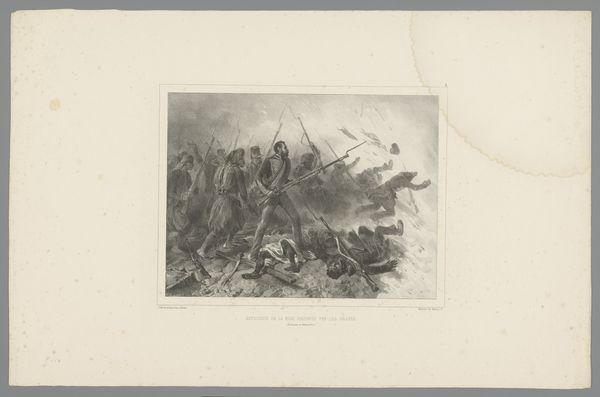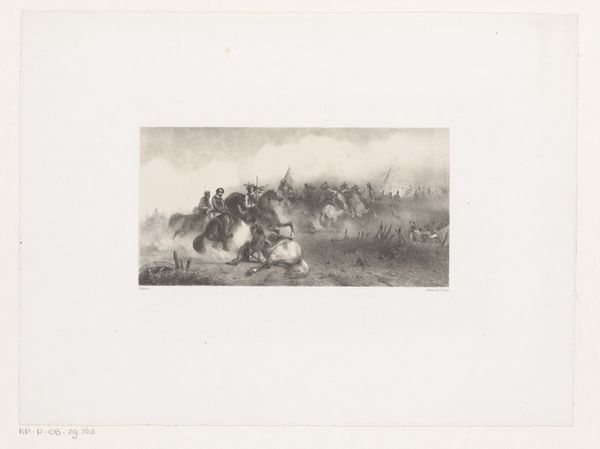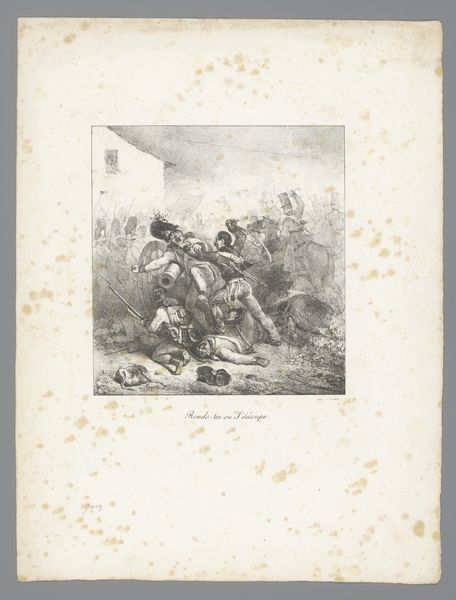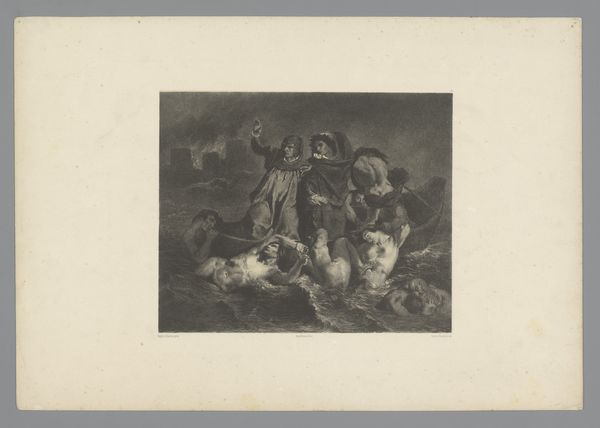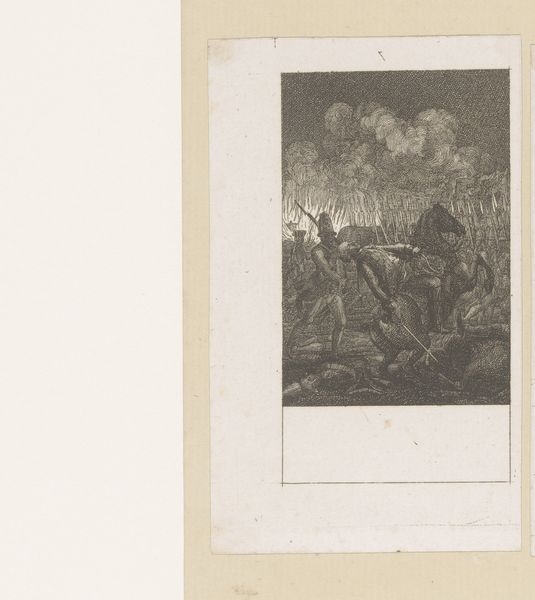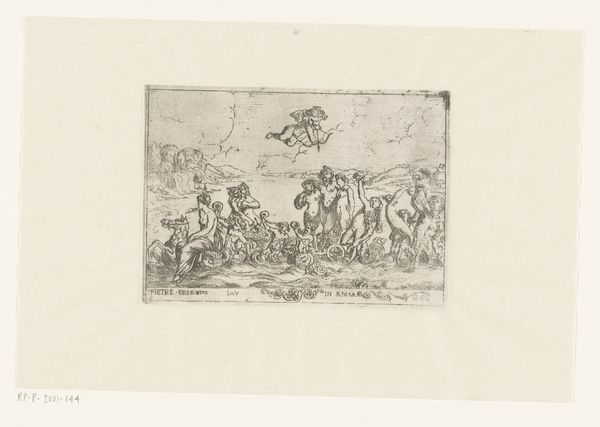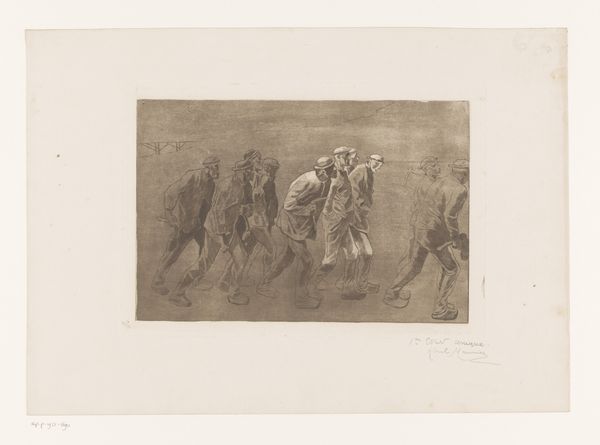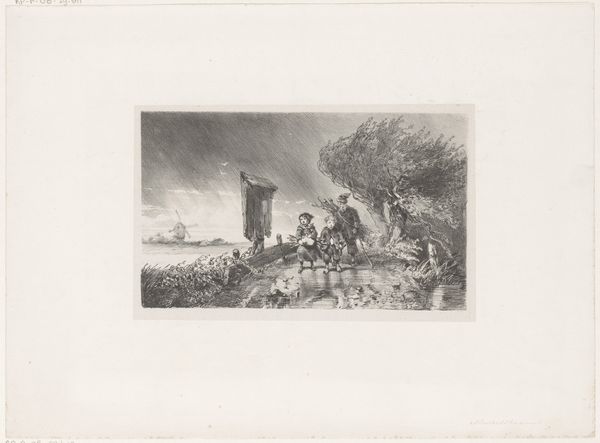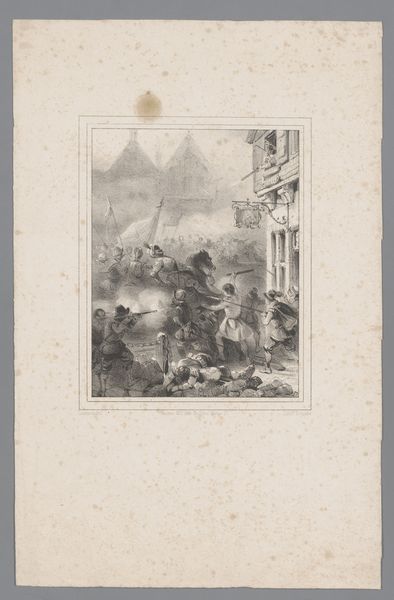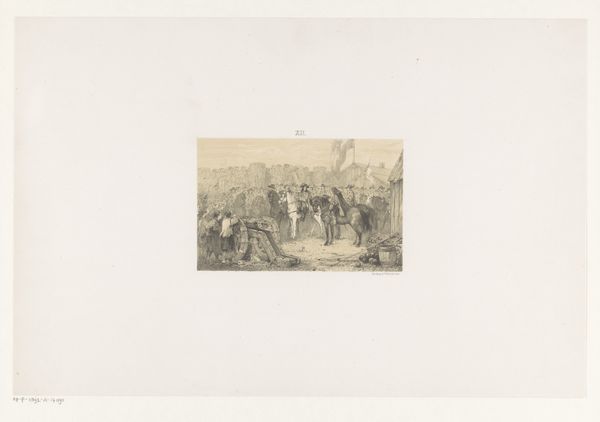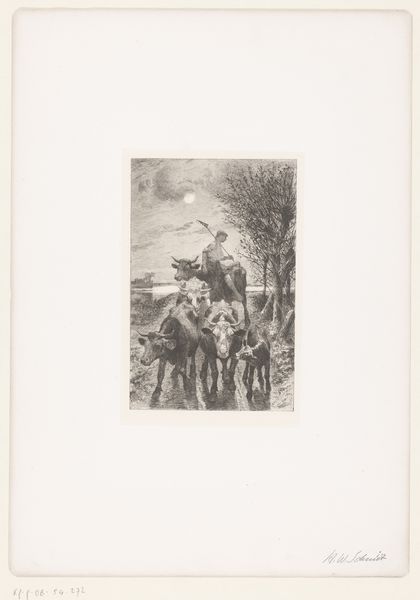
Dimensions: height 137 mm, width 98 mm
Copyright: Rijks Museum: Open Domain
Edgar Alfred Baes made this etching, Rondedans om een vreugdevuur, using a metal plate and acid. This process allowed him to create fine lines and detailed textures, crucial for capturing the atmosphere of the scene. The etching technique involves covering a metal plate with a waxy, acid-resistant substance, drawing an image through the wax, and then immersing the plate in acid. The acid bites into the exposed metal, creating grooves that hold ink. This printmaking method, while requiring skill and precision, enabled Baes to produce multiple impressions of his work. The social context of the printmaking process itself is significant. Unlike unique works such as paintings or sculptures, etchings can be reproduced, making art more accessible. This aligns with the democratic ideals emerging in the 19th century, where art was no longer exclusively for the elite. The labor-intensive nature of etching also reflects the value placed on craftsmanship during this period. By understanding the materials and making process of this artwork, we can appreciate how Baes’s art democratized art production at the time, challenging the traditional boundaries between fine art and craft.
Comments
No comments
Be the first to comment and join the conversation on the ultimate creative platform.
